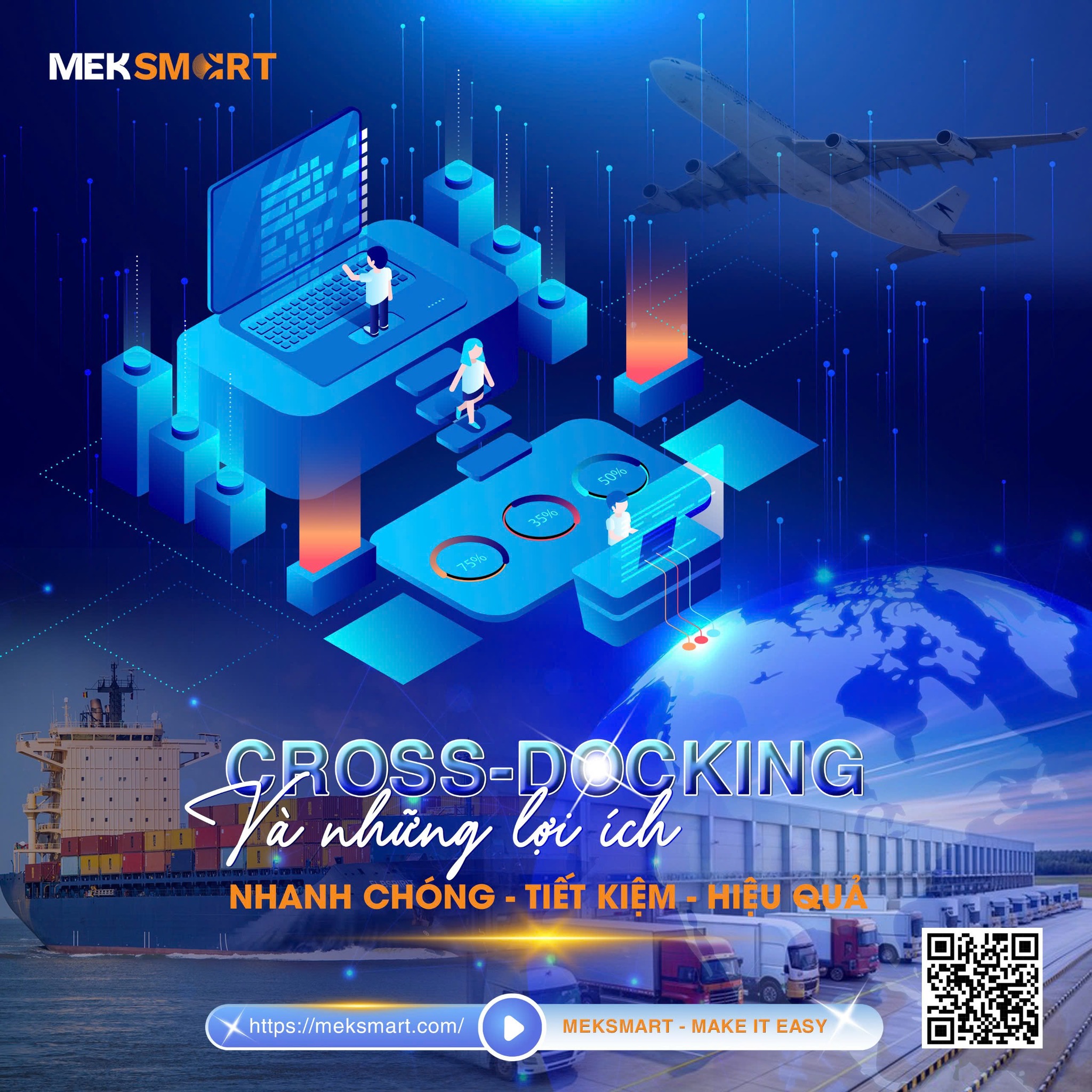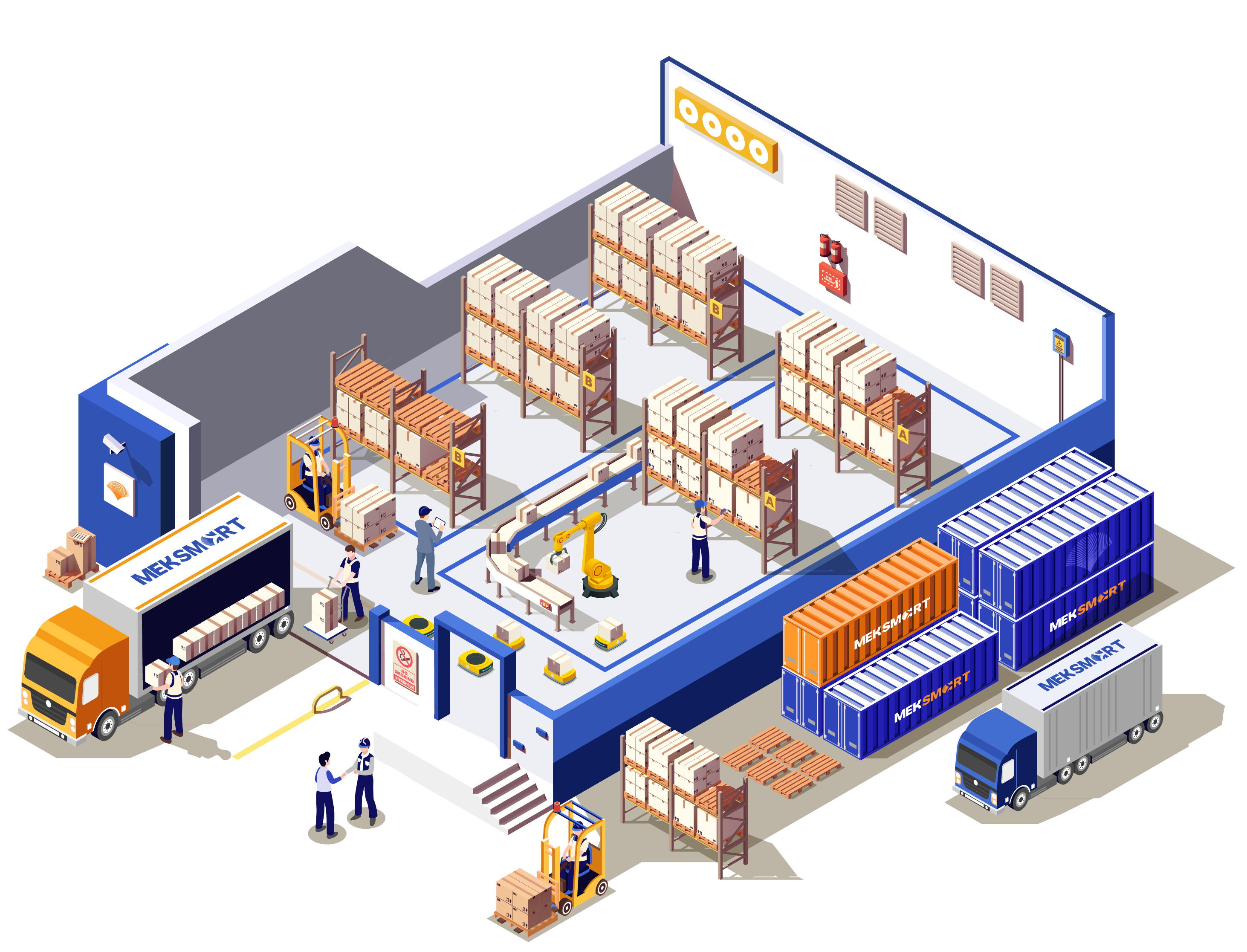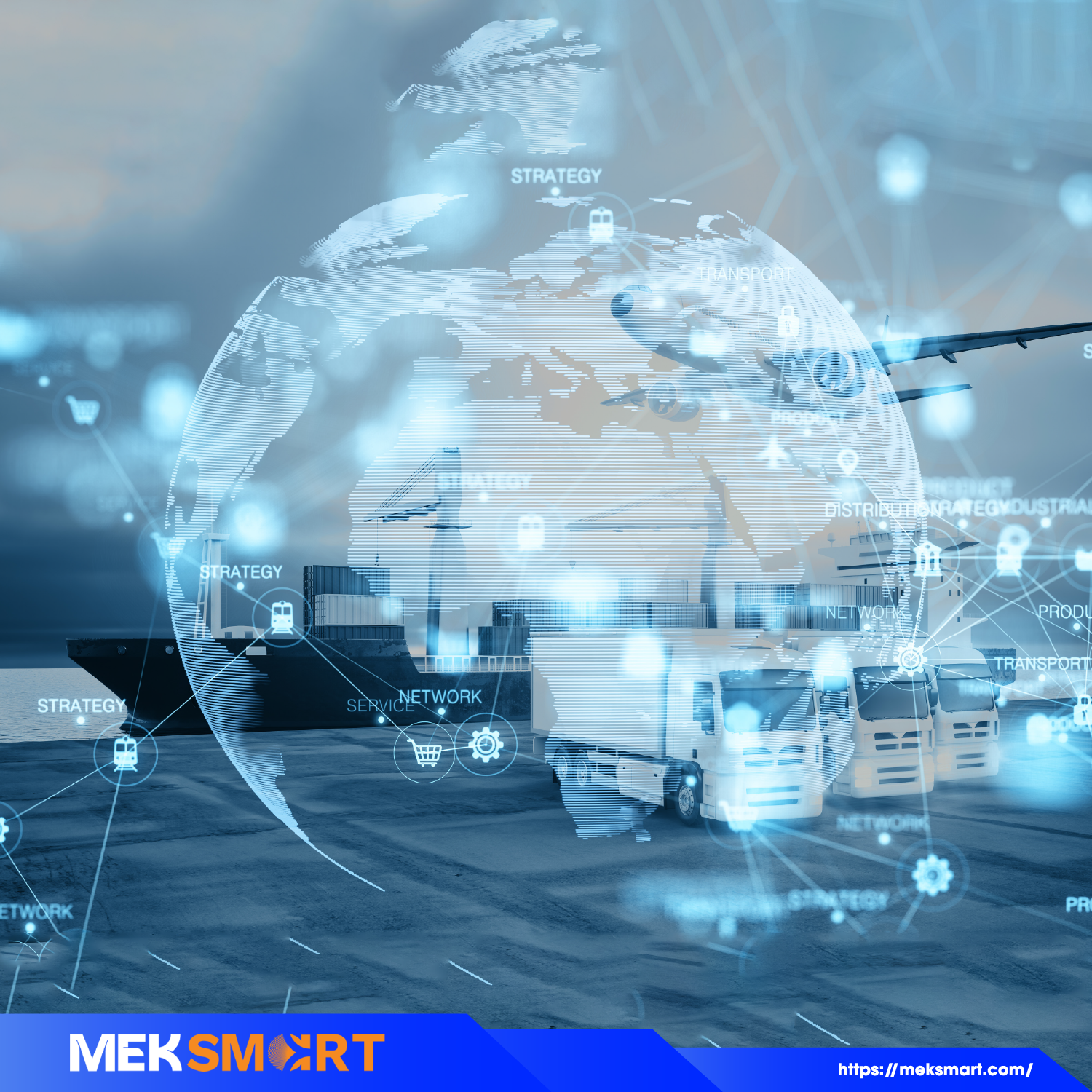MEKSMART
GENERAL NEWS
Author: Meker Meksmart
Update: 01/11/2024
MEKWMS | CROSS – DOCKING AND THINGS YOU DON'T KNOW.
Find out what Cross docking is?
Cross-docking is a technique in supply chain management and logistics, goods are received directly from suppliers or warehouses and immediately transferred to retail stores without the need for intermediate storage. This helps optimize the distribution process, while requiring smooth coordination between stages to ensure efficiency.

Types of Cross-docking:
- Single-session cross-docking: Goods from suppliers are received into the warehouse and immediately transferred to the final destination.
- Cross-docking through temporary warehouses: Goods are received into temporary warehouses, classified and stacked according to customer orders before being shipped.
- Combined cross docking: a combination of single-session cross docking and cross docking through temporary warehouses and then classified and stacked again according to demand.
Cross-docking Process
- Receiving goods: Goods are received from suppliers or large gathering points.
- Checking and classifying goods: After receiving, the goods will be checked for quantity, quality, and classified according to distribution routes.
- Planning delivery: Based on the classification information, an optimal plan is made to transport goods to consumption points.
- Transporting: Goods are arranged and loaded onto the means of transport for delivery.
- Re-checking goods: Ensuring that the goods arrive at the correct location and quantity required.
- Delivery: Goods are delivered to customers or retail points as planned.
Benefits of Cross-docking
- Saving storage costs: One of the biggest benefits of “cross-docking” is minimizing the cost of storing and preserving goods in the warehouse. Because goods are shipped immediately without long-term storage, businesses can save space and reduce inventory management costs.
- Eliminate intermediate steps: Cross-docking helps businesses eliminate intermediate steps such as consolidation or warehousing before shipping, thereby saving time and effort.
- Increase the speed of goods circulation: Goods are moved directly from suppliers to retail points, helping to shorten circulation time, especially important for products with short shelf lives such as food and pharmaceuticals. Thanks to that, product quality is guaranteed and delivery time is optimized.
- Optimize logistics: reduce overall logistics operating costs, while improving the ability to respond to market demand more quickly.
- Improve customer satisfaction: With faster delivery speeds and quality products, “cross-docking” helps improve customer experience and satisfaction.
The role of modern warehouse management software
To achieve these benefits, a modern MEKWMS warehouse management software cannot lack the “cross-docking” feature. MEKWMS helps track, coordinate and optimize the cross-docking process by automating many steps from receiving goods, checking, sorting to planning delivery. Features such as integration with ERP systems, real-time management, and detailed reporting are important factors that help businesses manage the process effectively, thereby ensuring that goods are distributed faster and more accurately.
Cross-docking is not only a solution to optimize costs but also the key for businesses to maintain a competitive advantage in the modern logistics industry. Integrating advanced technology and management software will help businesses operate the cross-docking system more effectively, bringing practical values to both businesses and customers.













